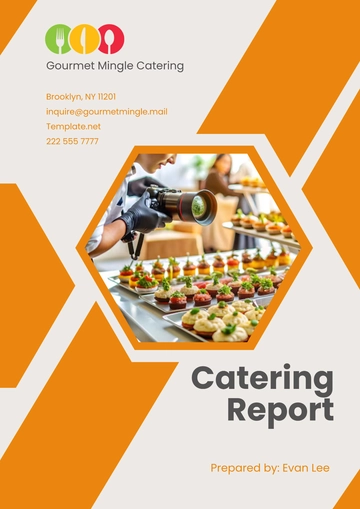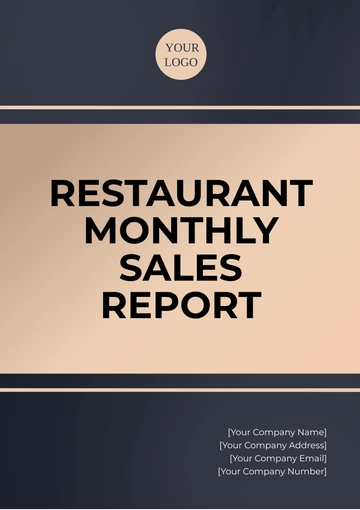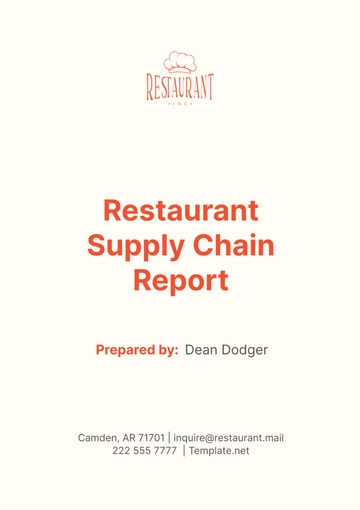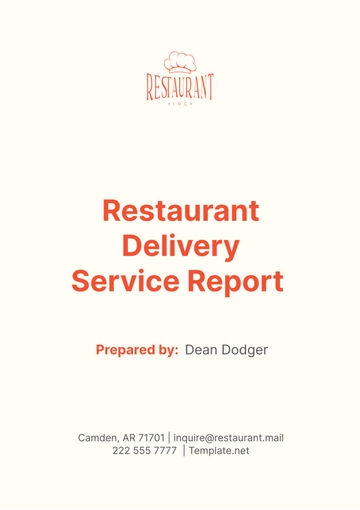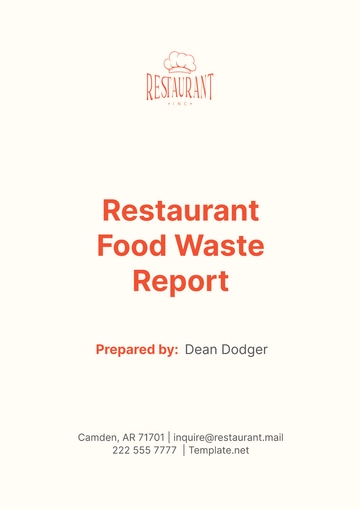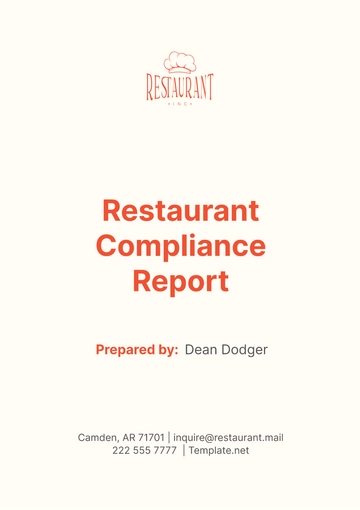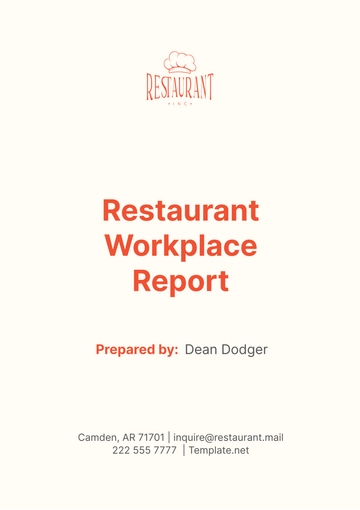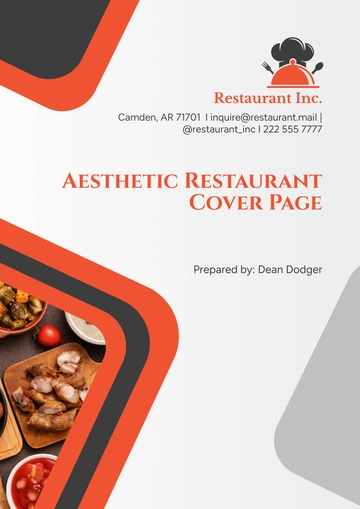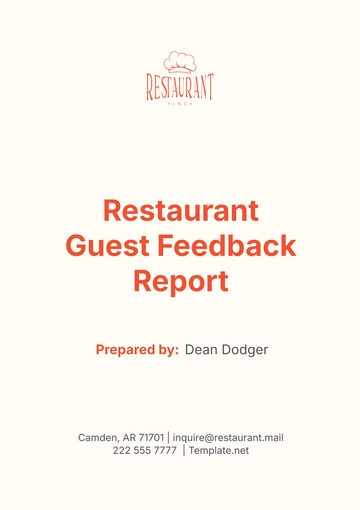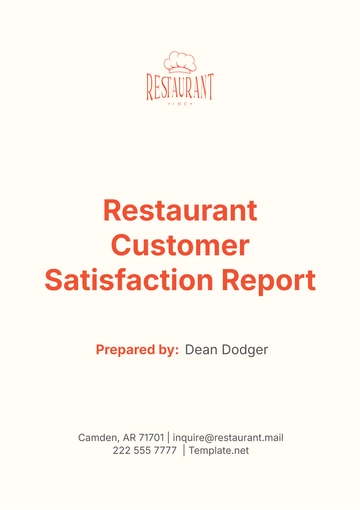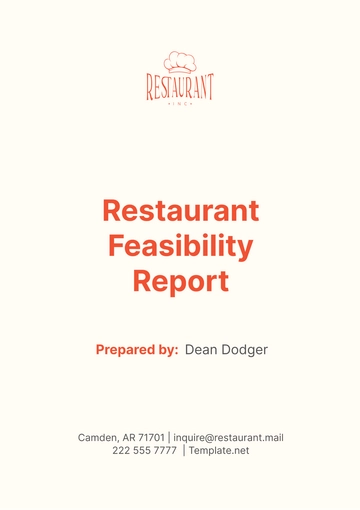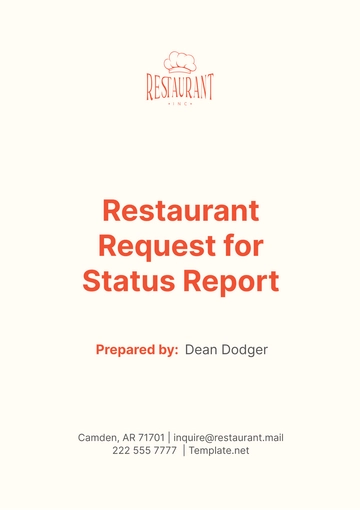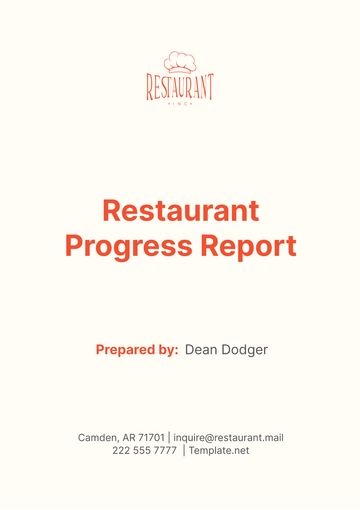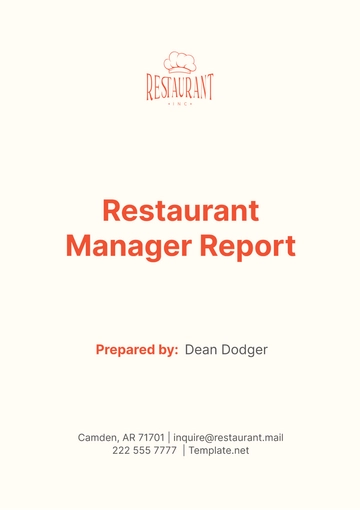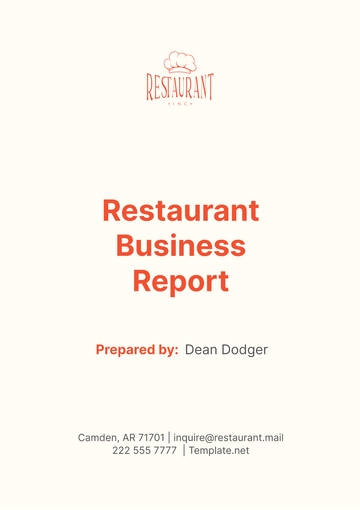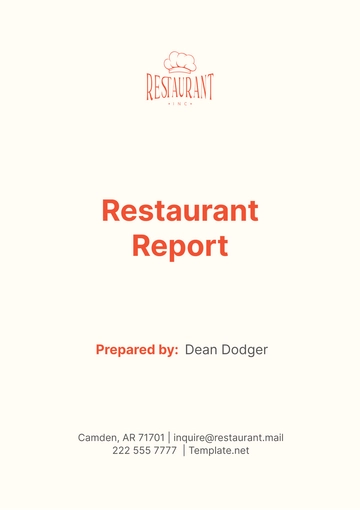Free Restaurant Compliance Report
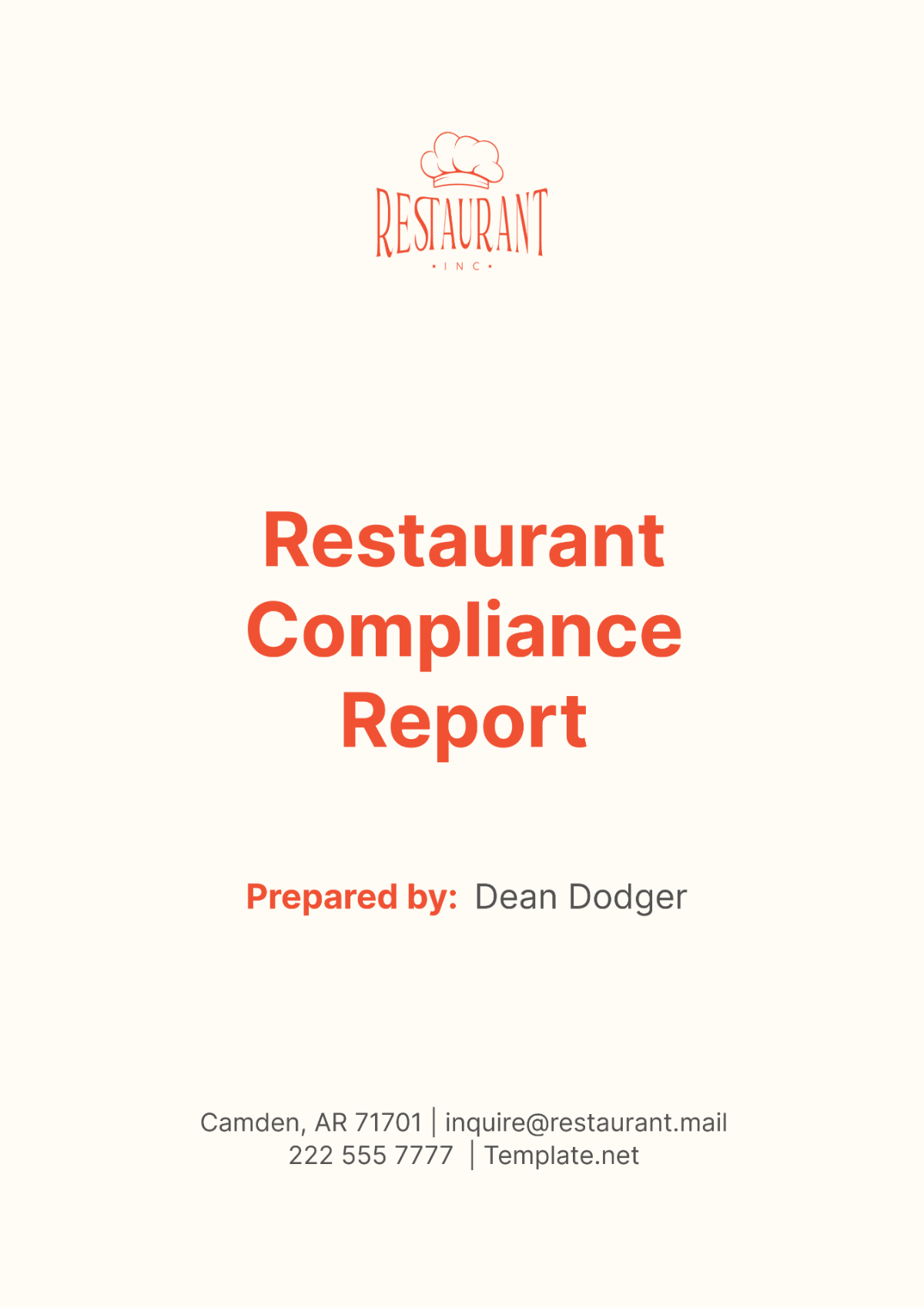
I. Executive Summary
This Compliance Report of [Your Company Name] serves as a comprehensive document that encapsulates our commitment to adhering to various health, safety, and operational standards. This report is not just a testament to our dedication to compliance, but it also serves as a tool for continuous improvement, providing a detailed analysis of our current compliance levels, highlighting areas where we excel, and identifying opportunities for further enhancement.
Our commitment to regular assessments and strict adherence to industry standards ensures a high level of service quality and operational efficiency at [Your Company Name]. This report covers the major compliance dimensions, including hygiene, staff training, and regulatory obligations, which are integral to our operations.
Through this report, we aim to demonstrate our dedication to maintaining a safe, clean, and efficient restaurant environment. By identifying and addressing any areas of concern, we can continue to provide exceptional service to our customers while adhering to the highest industry standards.
II. Hygiene and Sanitation
Hygiene and sanitation are fundamental aspects of restaurant operations, directly influencing customer satisfaction, food safety, and the overall reputation of [Your Company Name]. The following table provides a detailed overview of our current compliance levels in various hygiene and sanitation parameters, based on our most recent inspections:
Parameter | Compliance Level | Comments |
|---|---|---|
Kitchen Cleanliness | 95% | Overall clean, minor improvements needed on countertops |
Dining Area Cleanliness | 90% | Regular cleaning is maintained; high-traffic areas require more frequent cleaning |
Restroom Sanitation | 85% | Restrooms are clean but require better odor control |
A. Kitchen Cleanliness
Our kitchen cleanliness stands at a commendable 95% compliance level. The kitchen, being the heart of our restaurant, is kept overall clean. However, minor improvements are needed on countertops. These improvements could include more frequent cleaning during service hours and a thorough deep clean post-service. Maintaining high cleanliness in the kitchen is crucial as it directly impacts the food we serve and ultimately, customer satisfaction.
B. Dining Area Cleanliness
The dining area, where our customers spend most of their time, has a cleanliness compliance level of 90%. Regular cleaning is maintained to provide a pleasant dining environment. However, high-traffic areas require more frequent cleaning to ensure a consistently clean space. This not only enhances the dining experience but also reflects our commitment to hygiene and cleanliness.
C. Restroom Sanitation
Restroom sanitation is another critical aspect of our restaurant operations, with a current compliance level of 85%. While our restrooms are clean, they require better odor control. This could be achieved through regular checks, prompt cleaning, and the use of effective odor-neutralizing products. Clean and fresh-smelling restrooms contribute significantly to the overall customer experience.
Maintaining high standards of hygiene and sanitation is not just about compliance; it’s about showing respect for our customers and staff, and it’s a reflection of our values as a business. By focusing on these areas, we can ensure that [Your Company Name] remains a preferred choice for dining, known for its cleanliness and commitment to hygiene.
Furthermore, it helps us foster a culture of cleanliness among our staff, making hygiene and sanitation a collective responsibility. As we continue to improve in these areas, we are not just aiming for higher compliance levels, but we are also contributing to the overall health and safety of our community.
III. Staff Training and Certification
Staff training and certification play a crucial role in the successful operation of [Your Company Name]. The following table provides a detailed overview of the current status of our staff training and certification:
Training Component | Percentage Completed | Remarks |
|---|---|---|
Food Handling and Safety | 100% | All staff members have completed the required training |
Customer Service Training | 90% | Scheduled for completion by the end of the month |
Emergency Procedures | 80% | Additional training sessions planned |
A. Food Handling and Safety
Food handling and safety training is a critical component of our staff training program. With a completion rate of 100%, we have ensured that all our staff members are well-versed in safe food handling practices. This training covers important aspects such as proper food storage, temperature control, cross-contamination prevention, and personal hygiene. By ensuring that our staff are proficient in these areas, we can maintain high food safety standards and provide our customers with safe, high-quality meals.
B. Customer Service Training
Customer service training is another key aspect of our staff training program. Currently, 90% of our staff have completed this training. This training focuses on enhancing our staff’s communication skills, problem-solving abilities, and understanding of our restaurant’s policies and procedures. By improving our staff’s customer service skills, we can ensure a positive dining experience for our customers.
C. Emergency Procedures
Emergency procedures training is crucial for ensuring the safety of both our staff and customers. At present, 80% of our staff have completed this training, and additional sessions are planned to ensure all staff are trained. This training covers procedures for various emergency situations, including fire safety, medical emergencies, and evacuation procedures. By equipping our staff with this knowledge, we can ensure a swift and effective response in the event of an emergency.
Staff training and certification are not just about compliance; they are about ensuring that our staff are equipped with the necessary skills and knowledge to perform their roles effectively. This not only enhances the quality of our service but also contributes to a positive work environment where staff feel confident and competent in their roles.
Furthermore, by investing in our staff’s training and development, we are also investing in the future of [Your Company Name]. Well-trained staff are more likely to provide excellent service, leading to higher customer satisfaction and loyalty. They are also more likely to stay with the company longer, reducing turnover and recruitment costs. Therefore, staff training and certification are not just beneficial for compliance purposes, but they also have significant long-term benefits for our business.
IV. Regulatory Compliance
Regulatory compliance is a crucial aspect of restaurant operations at [Your Company Name]. The following points summarize our current status in various regulatory areas:
Regulatory Area | Compliance Status |
|---|---|
Health Department Certification | Pass |
Fire Safety Compliance | Pass |
Alcohol Licensing | Up-to-date |
Waste Management | Satisfactory |
A. Health Department Certification
Health Department Certification is a key regulatory requirement for any restaurant. At [Your Company Name], we have successfully passed the health department certification, indicating our adherence to the required health and safety standards. This certification is a testament to our commitment to providing a safe and hygienic dining environment for our customers.
B. Fire Safety Compliance
Fire safety is a critical aspect of our operations. We have passed the fire safety compliance check, demonstrating that our restaurant is equipped with the necessary fire safety equipment and that our staff are trained in fire safety procedures. This ensures that in the event of a fire, we are prepared to protect our customers, staff, and property.
C. Alcohol Licensing
If alcohol is served at [Your Company Name], maintaining an up-to-date alcohol license is crucial. Our alcohol license is current, ensuring that we comply with all local and national laws related to the sale and consumption of alcohol. This license is essential for offering our customers a variety of beverage options and enhancing their dining experience.
D. Waste Management
Proper waste management is not only a regulatory requirement but also a reflection of our commitment to environmental sustainability. Our waste management practices have been deemed satisfactory, indicating that we are effectively managing and disposing of waste in a manner that minimizes our environmental impact.
Regulatory compliance is about upholding our commitment to safety, quality, and integrity. By complying with these regulations, we are not only meeting legal requirements but also demonstrating to our customers and staff that we are committed to maintaining a safe, high-quality dining environment.
Furthermore, regulatory compliance has a direct impact on our reputation. Compliance failures can lead to penalties, business disruption, and damage to our brand. Therefore, we view regulatory compliance as a critical component of our risk management strategy. By proactively managing our compliance, we can protect our business, build trust with our customers, and focus on delivering exceptional service.
V. Recommendations
Based on the current compliance status of [Your Company Name], we have identified several areas for improvement. These recommendations are designed to enhance our compliance framework and ensure that we continue to meet and exceed industry standards:
A. Increase Frequency of Hygiene Inspections
Current Situation: While our current hygiene inspections are thorough, increasing their frequency, especially in high-traffic areas, can help us maintain a consistently clean environment.
Proposed Action: We recommend scheduling additional inspections throughout the day. This will allow us to promptly address any cleanliness issues and prevent them from escalating.
Expected Outcome: By increasing the frequency of hygiene inspections, we can ensure a cleaner and safer environment for our customers and staff.
Implementation Plan: We will train additional staff members to conduct these inspections and adjust our cleaning schedules accordingly.
Follow-up: We will monitor the effectiveness of these additional inspections and make further adjustments as necessary.
B. Schedule Additional Staff Training Sessions
Current Situation: While our staff are well-trained in emergency procedures, additional training sessions can ensure that all staff members are fully prepared for any situation.
Proposed Action: We recommend scheduling additional training sessions focusing on emergency procedures. These sessions should include practical exercises to help staff understand and remember the procedures.
Expected Outcome: With additional training, our staff will be better equipped to handle emergencies, ensuring the safety of our customers and staff.
Implementation Plan: We will coordinate with our training department to schedule these sessions and ensure all staff members can attend.
Follow-up: We will assess the effectiveness of the training through drills and feedback from staff.
C. Implement a More Robust Odor Control System in Restrooms
Current Situation: Our restrooms are clean, but they require better odor control to enhance the overall customer experience.
Proposed Action: We recommend implementing a more robust odor control system in our restrooms. This could include automatic air fresheners or odor-neutralizing cleaning products.
Expected Outcome: With a more effective odor control system, our restrooms will be more pleasant for our customers to use.
Implementation Plan: We will research and select suitable products for our restrooms, and train our cleaning staff on their use.
Follow-up: We will monitor customer feedback and make adjustments as necessary to ensure the effectiveness of the new odor control system.
D. Establish a Compliance Review Team
Current Situation: While we are in good standing with most regulatory requirements, continuous monitoring and proactive management are key to maintaining compliance.
Proposed Action: We recommend establishing a compliance review team to monitor and address regulatory changes promptly.
Expected Outcome: The compliance review team will ensure that we stay up-to-date with all regulatory changes and implement necessary adjustments in a timely manner.
Implementation Plan: We will select team members from relevant departments and provide them with the necessary training and resources.
Follow-up: The team will meet regularly to review our compliance status and discuss any necessary actions.
VI. Conclusion
The Compliance Report of [Your Company Name] serves as a testament to our commitment to maintaining high standards of compliance in all aspects of our restaurant operations. It highlights the significant areas of compliance and identifies areas needing improvement. Continuous attention to detail, regular training, and adherence to standards will underpin our commitment to providing an exceptional dining experience.
We acknowledge the hard work of our staff and the ongoing support from regulatory bodies. With these collaborations, we aim to achieve and maintain full compliance across all operational aspects. This commitment to excellence will ensure that [Your Company Name] continues to provide a safe, enjoyable, and high-quality dining experience for all our customers.
- 100% Customizable, free editor
- Access 1 Million+ Templates, photo’s & graphics
- Download or share as a template
- Click and replace photos, graphics, text, backgrounds
- Resize, crop, AI write & more
- Access advanced editor
Generate with ease and ensure regulatory adherence with this editable Restaurant Compliance Report Template only here on Template.net! This customizable report allows for detailed reporting on compliance matters. Customize the sections to meet specific requirements, and utilize the integrated AI Editor Tool for accurate and professional compliance reports! Get started!
You may also like
- Sales Report
- Daily Report
- Project Report
- Business Report
- Weekly Report
- Incident Report
- Annual Report
- Report Layout
- Report Design
- Progress Report
- Marketing Report
- Company Report
- Monthly Report
- Audit Report
- Status Report
- School Report
- Reports Hr
- Management Report
- Project Status Report
- Handover Report
- Health And Safety Report
- Restaurant Report
- Construction Report
- Research Report
- Evaluation Report
- Investigation Report
- Employee Report
- Advertising Report
- Weekly Status Report
- Project Management Report
- Finance Report
- Service Report
- Technical Report
- Meeting Report
- Quarterly Report
- Inspection Report
- Medical Report
- Test Report
- Summary Report
- Inventory Report
- Valuation Report
- Operations Report
- Payroll Report
- Training Report
- Job Report
- Case Report
- Performance Report
- Board Report
- Internal Audit Report
- Student Report
- Monthly Management Report
- Small Business Report
- Accident Report
- Call Center Report
- Activity Report
- IT and Software Report
- Internship Report
- Visit Report
- Product Report
- Book Report
- Property Report
- Recruitment Report
- University Report
- Event Report
- SEO Report
- Conference Report
- Narrative Report
- Nursing Home Report
- Preschool Report
- Call Report
- Customer Report
- Employee Incident Report
- Accomplishment Report
- Social Media Report
- Work From Home Report
- Security Report
- Damage Report
- Quality Report
- Internal Report
- Nurse Report
- Real Estate Report
- Hotel Report
- Equipment Report
- Credit Report
- Field Report
- Non Profit Report
- Maintenance Report
- News Report
- Survey Report
- Executive Report
- Law Firm Report
- Advertising Agency Report
- Interior Design Report
- Travel Agency Report
- Stock Report
- Salon Report
- Bug Report
- Workplace Report
- Action Report
- Investor Report
- Cleaning Services Report
- Consulting Report
- Freelancer Report
- Site Visit Report
- Trip Report
- Classroom Observation Report
- Vehicle Report
- Final Report
- Software Report
